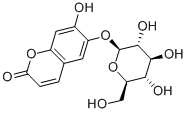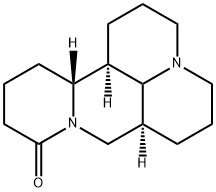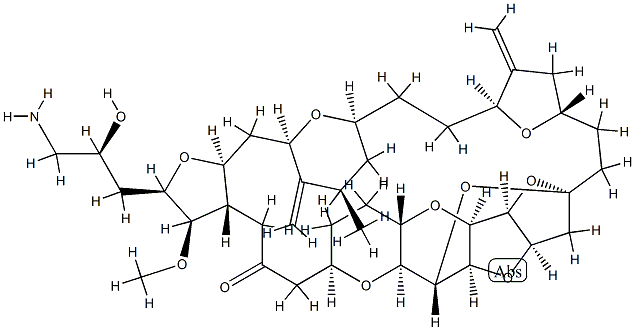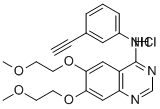Esculin
Synonym(s):Esculin;Aesculin;Bicolorin;Crataegin;Enallachrome
- CAS NO.:531-75-9
- Empirical Formula: C15H16O9
- Molecular Weight: 340.28
- MDL number: MFCD00006879
- EINECS: 208-517-5
- SAFETY DATA SHEET (SDS)
- Update Date: 2025-12-17 09:50:08

What is Esculin?
Absorption
Rarely, absorbed into the blood stream if used as a combination with other ingredients in suppository form. But, Applying cream or ointment form to open wound or skin may lead this drug to absorb and circulate into blood stream.
Toxicity
Organism : Mouse Test type : LD50 Route: Intraperitoneal Reported dose: 1900mg/kg No reported effects known other than LD50
Chemical properties
White to nearly white
The Uses of Esculin
Esculin hydrate has been used as a component of sporulation-inducing esculin agar. It has also been used for esculin uptake assay.
The Uses of Esculin
esculin is used as a skin protectant in ointments and creams. This is a glucoside compound originally obtained from the leaves and bark of the horse chestnut tree.
The Uses of Esculin
esculoside is utilized in formulations for the treatment of cellulite. es culoside is apparently beneficial for impaired microcirculation.
Indications
As medication, esculin is sometimes used as a vasoprotective agent. Esculin is also used in a microbiology laboratory to aid in the identification of bacterial species (especially Enterococci and Listeria), as all strains of Group D Streptococci hydrolyze ?sculin in 40% bile.
Background
Esculin is found in barley. Vitamin C2 is generally considered a bioflavanoid, related to vitamin P esculin is a glucoside that naturally occurs in the horse chestnut (Aesculus hippocastanum), California Buckeye (Aesculus californica) and in daphnin (the dark green resin of Daphne mezereum). Esculin belongs to the family of Glycosyl Compounds. These are carbohydrate derivatives in which a sugar group is bonded through its anmoeric carbonA to another group via a C-, S-,N-,O-, or Se- glycosidic bond.
What are the applications of Application
Esculin is an antioxidant that displays vitamin P activity
Definition
ChEBI: A hydroxycoumarin that is the 6-O-beta-D-glucoside of esculetin.
General Description
Esculin hydrate has vasoprotective and venotonic properties.
Flammability and Explosibility
Not classified
Biochem/physiol Actions
Esculin is a coumarin glycoside that demonstrates antioxidant activitites and protection against chemically-induced carcinogenesis. Esculin is utilized in microbiology for the isolation and identification of Enterococcus (group D streptococci).
Pharmacokinetics
Topically applied Esculine increases the “capillary density” (the number of capillaries open to flow per surface unit) and improves the morphological aspect of the smallest blood vessels.
Metabolism
After oral administration of esculin (100 mg/kg) for rats, plasma, urine, feces and bile samples were collected to screen metabolites. As a result, a total of 19 metabolites (10 phase I metabolites and 9 phase II metabolites) were found and identified. It was also found that after oral administration of esculin, the esculin could be metabolized to esculetin in vivo via deglycosylation, and esculetin was found in all biological samples.
Properties of Esculin
| Melting point: | 203 °C |
| Boiling point: | 396.1°C (rough estimate) |
| alpha | -88 º (c=2,dioxane/water1:1) |
| Density | 0.791 g/mL at 20 °C |
| vapor pressure | 0Pa at 25℃ |
| refractive index | -79 ° (C=2.4, 50% Dioxane) |
| Flash point: | 15 °C |
| storage temp. | 2-8°C |
| solubility | methanol: 50 mg/mL hot, clear to very faintly turbid, yellow-green fluoresc. |
| form | Liquid |
| pka | 7.00±0.20(Predicted) |
| color | Clear |
| optical activity | [α]20/D 41±2°, c = 5% in pyridine |
| Water Solubility | MODERATELY SOLUBLE |
| Merck | 3698 |
| Stability: | Stable. Incompatible with strong oxidizing agents. |
| CAS DataBase Reference | 531-75-9(CAS DataBase Reference) |
| NIST Chemistry Reference | 7-Hydroxy-2-oxo-2h-chromen-6-yl hexopyranoside(531-75-9) |
| EPA Substance Registry System | Esculin (531-75-9) |
Safety information for Esculin
| Signal word | Warning |
| Pictogram(s) |
 Exclamation Mark Irritant GHS07 |
| GHS Hazard Statements |
H302:Acute toxicity,oral |
| Precautionary Statement Codes |
P264:Wash hands thoroughly after handling. P264:Wash skin thouroughly after handling. P270:Do not eat, drink or smoke when using this product. P501:Dispose of contents/container to..… |
Computed Descriptors for Esculin
| InChIKey | YRABYCJKUBFWQY-FHXAZYNBSA-N |
Esculin manufacturer
New Products
4,4-Difluoropiperidine hydrochloride tert-butyl 9-methoxy-3-azaspiro[5.5]undecane-3-carboxylate Indole Methyl Resin N-Isopropylurea N,N-Dicyclohexylcarbodiimide(DCC) MELDRUMS ACID 5-METHYLISOXAZOLE-4-CARBOXYLIC ACID Magnessium Bis glycinate Zinc ascorbate 1-bromo-2-butyne 2-acetamidophenol 9(10H)-anthracenone Erythrosin B, 4-Piperidinopiperidine 2-((4-morpholinophenylamino) (methylthio) methylene) malononitrile 2,4-dihydroxybenzaldehyde 3-(4-morpholinophenylamino)-5-amino-1H-pyrazole-4-carbonitrile Methyl 2-methylquinoline-6-carboxylate 2,6-dichloro-4-nitropyridine 4-Bromo-2-chlorobenzonitrile 2-(benzylamino)acetic acid hydrochloride 4-(tert-Butoxycarbonylamino)but- 2-ynoic acid 3,4-dihydro-2H-benzo[b][1,4]dioxepine 1-Phenyl-1-cycloprppanecarboxylicacidRelated products of tetrahydrofuran








You may like
-
 Esculin, hydrate, ≥98% CASView Details
Esculin, hydrate, ≥98% CASView Details -
 Esculin hydrate 95.00% CAS 531-75-9View Details
Esculin hydrate 95.00% CAS 531-75-9View Details
531-75-9 -
 Esculin hydrate CAS 531-75-9View Details
Esculin hydrate CAS 531-75-9View Details
531-75-9 -
 Esculin Sesquihydrate 98% (HPLC) CAS 531-75-9View Details
Esculin Sesquihydrate 98% (HPLC) CAS 531-75-9View Details
531-75-9 -
 3-(4-amino-1-oxoisoindolin-2-yl)-1-methylpiperidine-2,6-dione 98%View Details
3-(4-amino-1-oxoisoindolin-2-yl)-1-methylpiperidine-2,6-dione 98%View Details -
 20677-73-0 (2,2-diethoxyethyl)methylamine 98%View Details
20677-73-0 (2,2-diethoxyethyl)methylamine 98%View Details
20677-73-0 -
 3-(4-(hydroxyamino)-1-oxoisoindolin-2-yl)piperidine-2,6-dione 98%View Details
3-(4-(hydroxyamino)-1-oxoisoindolin-2-yl)piperidine-2,6-dione 98%View Details -
 57381-49-4 2-bromo-4-chlorobenzonitrile 98%View Details
57381-49-4 2-bromo-4-chlorobenzonitrile 98%View Details
57381-49-4
